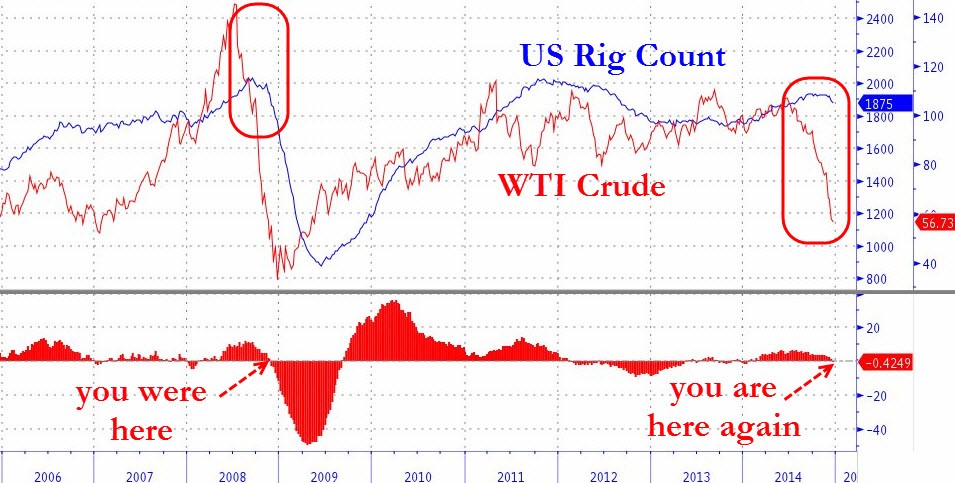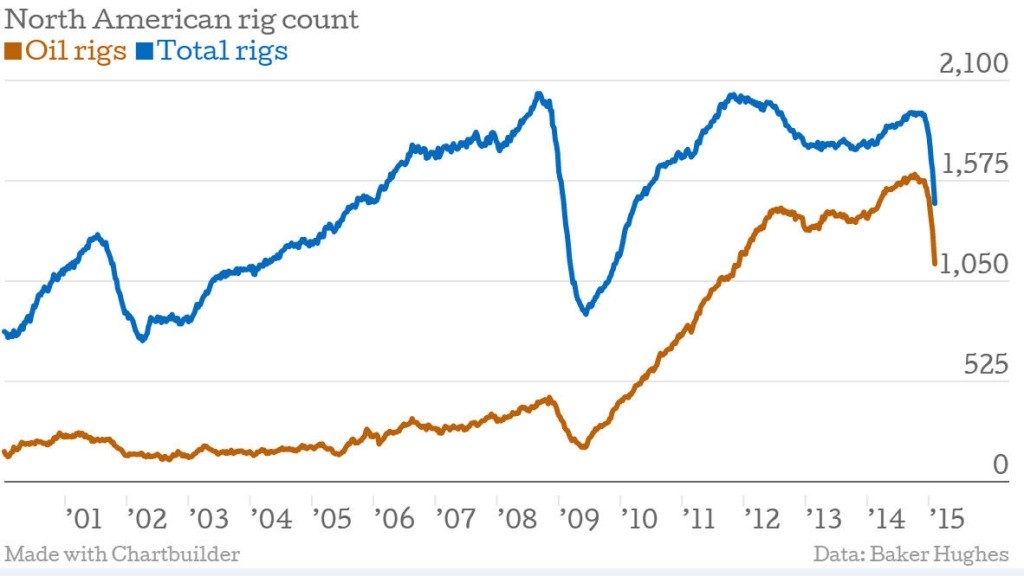Job Cuts Rig Counts Low Oil Prices and How to Invest
Post on: 4 Июнь, 2015 No Comment

Wading Through the Bad Stuff
Comments ( )
Monday, January 19th, 2015
After about seven months of a bear market for oil prices and stocks, the gloom hit its peak.
At the end of last week, wave after wave of negative headlines and stories about the decline of the oil industry plagued the pages of financial newsletters and mainstream publications.
Schlumberger (NYSE: SLB) announced it would lay off 9,000 workers, and Apache Corp. (NYSE: APA) said it too would cut jobs just under 5% of its workforce.
After a judge ruled it could ultimately pay close to $14 billion in damages from the Deepwater Horizon spill, BP (NYSE: BP) also cut jobs in the North Sea, as did Conoco Phillips (NYSE: COP).
Arguably the biggest news was the figures that came out on Friday showing, according to Baker Hughes, that U.S. rig counts shed more last week than they had since 2009, when oil traded for $35 a barrel.
The firm said the U.S. lost 74 operating rigs last week compared to a recent record of 98 just five years ago.
It seemed like the bad news would never end, and the only reprieve we saw was when the Swiss central bank decided to get rid of its cap on the franc. And even that was tied to oil’s decline.
But in today’s article, I want to show you why these stories don’t capture all of what’s happening in the energy industry.
Still Producing. Still Hiring
While the negativity surrounding the oil market is a sign that commodities investing is becoming increasingly more volatile, I would suggest you don’t fly into a panic.
In fact, if you look beyond the mainstream financial press and bad news, there are nuggets of good news to be found. even some worth investment.
In North Dakota, for example, the industry has been hammered by low oil prices (as has the rest of the world). But if you look at the state of midstream and refineries in the Bakken, you’ll find some great stories.
The Bismarck Tribune recently ran a piece that was quite surprising.
According to the paper, North Dakota has only one intrastate pipeline inspector, and he has to cover 6,000 miles of lines within the state by himself.
That’s why commissioners in North Dakota are lobbying for money from the state to hire new inspectors. Commissioner Brian Kalk requested a sum of $1 million to $1.5 million to help support pipeline inspections.
The total will help hire about five employees, who would inspect everything from gas pipelines to other chemical transmission systems.
The hard part, according to the officials involved in hiring new employees, is that it’s proved difficult to retain new inspectors.
It makes sense when you think about it. An able-bodied worker looking for a job in the oil and gas industry in North Dakota can get paid a $50,000 salary by the state or can go work on a rig and make double that.
The state is going to have to seriously increase pay for new inspectors or else face losing its employees to more palatable opportunities in the area.
So why exactly would the state (or rig operators, for that matter) be hiring new employees if oil were about to collapse as the headlines would have us believe?
I can’t answer that for you, but what I can show you is this.
As you can see, oil production is still growing in the Bakken, according to the EIA. Granted, this production is slower and less profitable, but it still shows us there’s hope within the sector that many are predicting is on the verge of collapse.
Instead, it will be a case of who can survive this decline and come out stronger on the other side.
The Best Free Investment You’ll Ever Make
Our analysts have traveled the world over, dedicated to finding the best and most profitable investments in the global energy markets. All you have to do to join our Energy and Capital investment community is sign up for the newsletter below.

Enter your email:
You’ll also get our free report, 2015 Oil Outlook by our resident expert Keith Kohl.
Midstream, Refiners, and More
My colleagues and I at Energy and Capital have been following the decline in crude prices and the investment environment diligently these last few months. For the most part, our answer to the decline has been simple.
Oil prices will go back up; it’s just a matter of when and how.
We can’t exactly predict when, but we can guess probably fairly accurately as to how it will happen. The reasons will be twofold: demand will increase while the price is lower (China is already buying extra oil and putting it into storage), and producers will cut back on production, reducing supply.
Put both factors together, and prices go back up. It’s that simple.
The difficulty for investors comes when we try to predict the exact timing. I can’t safely say whether the rebound will begin tomorrow or six months from now.
However, if you were to start investing now while the price is low, you’ll almost certainly make your money back. and then some.
Good Investing,
Alex Martinelli
With an eye squarely focused on the long-term, Alex Martinelli takes the art of income investing to a higher level within the energy sector. His research has helped hundreds of thousands of individual investors identify well established companies that have a long history of paying out dividends to their shareholders. For more info on Alex, check out his editor’s page .














